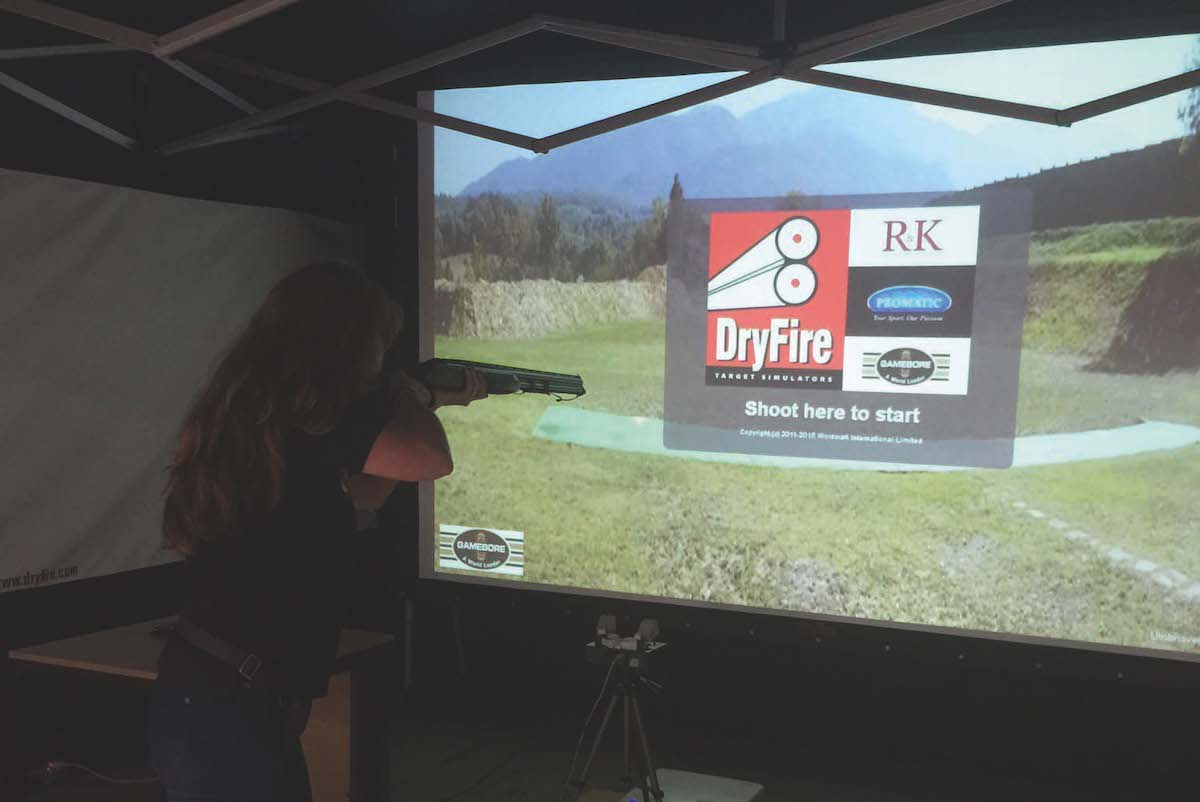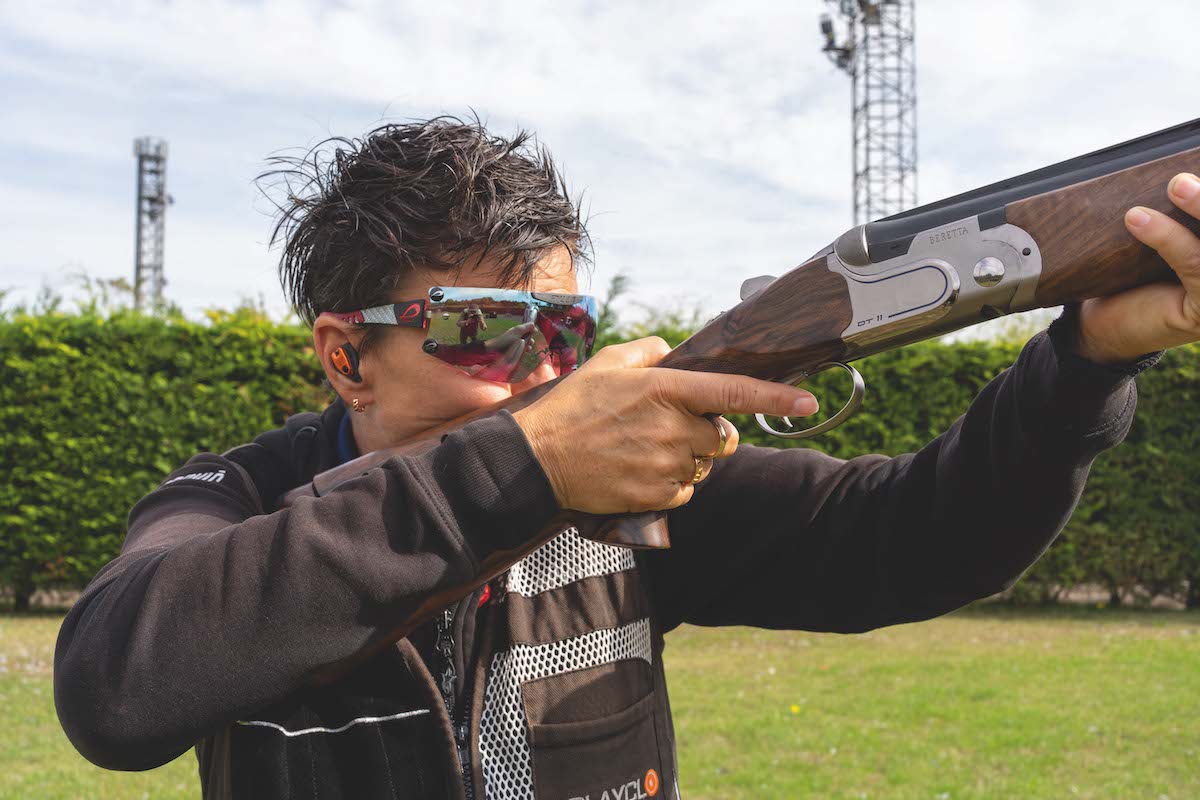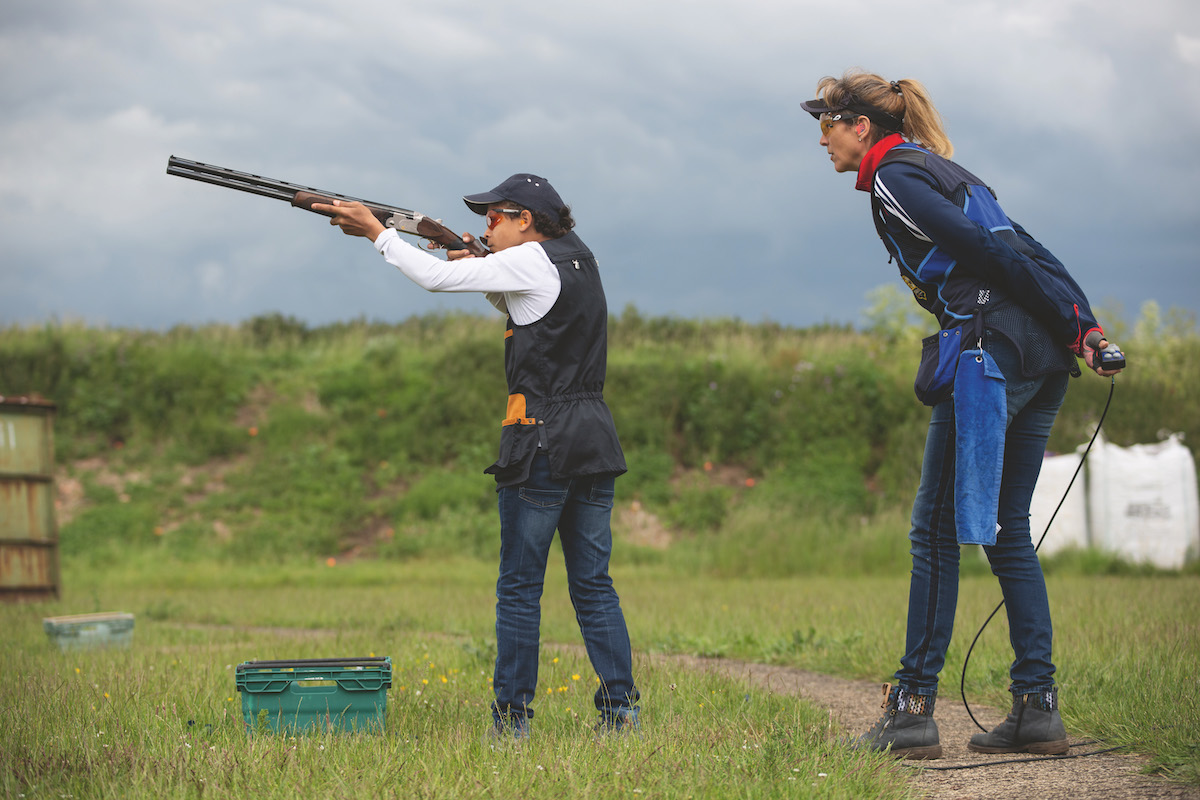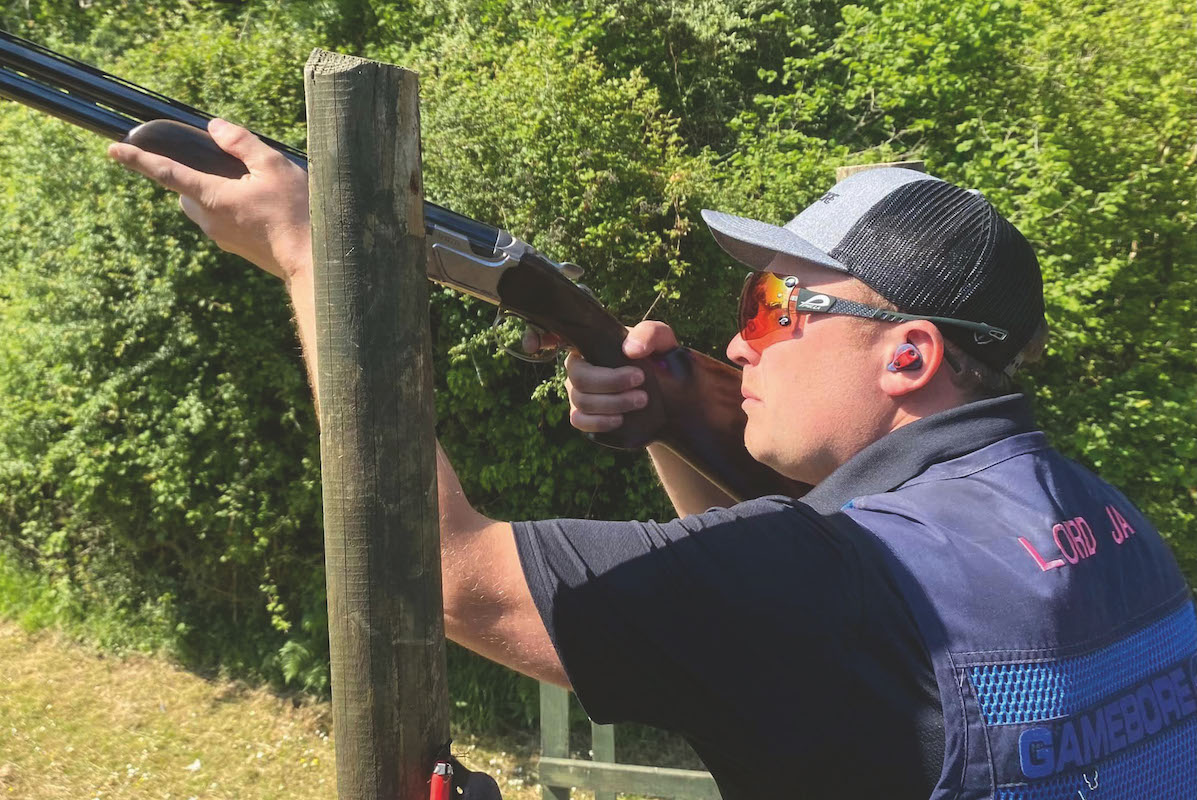Off-range training: how it could help you to become a better Shot
Jasper Fellows investigates the benefits of off-range training and discovers the bright future of digital training aids

DryFire gives shooters immediate feedback after every shot
How off-range training can help
What does it take to become a better Shot? Commitment? For sure. Capability? It helps. Clays and cartridges? Probably, but perhaps not. Over the past few months I’ve been ever more drawn to the concept of at-home training – training without the bang, the targets and the cost.But does ‘dry’ training work? And what do I even do with an unloaded gun and no targets to shoot at?
Few are better to answer these questions than the former Team England head coach and the current chairman of the Institute of Clay Shooting Instructors (ICSI), John Robinson, and the Shotgun & Chelsea Bun Club’s owner Georgina Roberts.
“My first comment would be to rethink home training as off-range training,” says John. “You can do so many elements of your training away from the range, but not everything can, or should, be done at home.
“Be careful if you are heading into the back garden to practise your gun mount in view of the neighbours – a visit from the armed response unit might just interfere with your training schedule! It is also worth remembering that while off-range training can be a substantial addition to on-range training, it is not a total substitute. That said, let’s look at what you can do off-range. (Read more on practising your gun mount here.)
Gun familiarisation
“First, gun familiarisation. Just handling your gun will help you to know it better; you want the act of picking up your gun to become second nature. The next step is gun-mount training. This must happen instinctively and consistently. The last thing you want to do is have to think about the correct way to mount the gun in the middle of a competition.”
Georgina agrees: “Gun-mount practice is a big one for me. If you want to be competitive it’s crucial to make sure that your gun mount is a subconscious action that you can perform perfectly every time.”
John continues: “Gun-mount training leads to practising your ‘one-shot-routine’. This is simply all the actions you’d take from walking on to the stand, loading the gun and calling for targets. I recommend writing your routine down, so that you don’t miss anything out.
“The next step is visualisation training, which I’d argue is one of the most powerful elements to add to a regime. It’s as simple as heading on to a closed range, loading your gun with snap caps, calling for targets and going through your one-shot-routine. The key is that when visualising the target and calling for it, have your eyes shut, otherwise you might ingrain looking at the gun.”

Georgina Roberts is the owner of the Shotgun & Chelsea Bun Club
Digital assistance
Clearly there’s a lot of homework that can be done with an empty gun. But let’s be honest, lifting and aiming a gun in the living room over and again can be boring. So how can I make it more exciting?
Wordcraft International’s DryFire system is arguably the best-known digital training aid in the UK. At first glance, the device seems to be little more than a box, with two laser pointers projecting arching dots on to a wall. But the magic comes from the device’s connection to your gun and computer. A small infrared device attached to your gun can pick up those laser targets and work out if you’ve virtually hit or missed.
“Aside from the cost benefits, and the fact that you can train from the comfort of your own home, the biggest benefit to our system is the fact that you receive immediate feedback after every shot,” says Andrea Roach, Wordcraft’s managing director.
“On their connected computer, users are not only able to see if a shot was a hit or a miss but will actually be able to see where the shot cloud was in relation to the target,” she explains.
If you’d rather a more authentic experience, DryFire also offers a full projector rig. “The projection system offers all the features of the laser system,” says Andrea, “but can also display a variety of backgrounds, and the targets can be sized up or down. Lead identifiers can be turned on and the results of every shot can be seen on the user’s shooting wall as well as their computer screen. We also offer downloadable updates on our website, and the user can even add different backgrounds from images stored on their computer.”
Experts react
“I could see a future in which shooters, regardless of discipline or experience, use digital technologies for off-range training geared specifically to their own goals,” says John. “But I do believe the digital training would still be an addition to on-range shooting, not a substitute.”
Georgina broadly agrees: “I think we will only see an increase in the amount of people wanting to train from home. We just need to make sure that people have a really good understanding of what will benefit them and how they can go about it in the right way.”
If you still aren’t sure about the digital revolution, Andrea puts it starkly: “Since the pandemic we have seen 45% growth both in the UK and overseas.”

Clays Bar is introducing a new demographic to the sport of shooting
Down to business
In 2019, entrepreneur Tom Snellock noticed the commercial potential of the expanding digital training aid market and had the vision to adapt the technology for the public. In November of that year, he opened the first Clays Bar, in the City of London. Picture a combination of bar, restaurant, bowling alley and projector-based digital training aid and you’ll have an approximation of what’s on offer at Clays.
While Clays does aim for a sense of authenticity, it’s clear that here the technology is being used for fun, rather than for serious training.
“We use real guns,” Tom explains, “brand new 12-bore Kofs, which we deactivate and stuff with technology. But our games aren’t based on classic clay disciplines, rather they are designed to gamify the experience.
“My favourite game, Bonanza, has four rounds. The first clay flies away from the shooter, like Trap, the second is driven towards the shooter and the final two cross high, like a classic Sporting pair. Then we can add unexpected elements: clays with smoky trails that knock points off, and star-filled trail boosters to fuel the competitive spirit and make for some amazing moments.”
So, gamified for sure, but isn’t shooting meant to be fun? One could look down on Clays as a corruption of the sport, but the truth is that Tom is pulling in more punters than most clay grounds could ever dream of.
“From the beginning, our focus has been on creating an experience that appeals to a broad audience,” says Tom. “We’re proud to have a near-even split of male and female customers, with a large proportion coming from the 24 to 34 age range. We’ve recently served our 200,000th customer and are getting ready to announce some big plans for our third and fourth UK locations.”
Brave new world
Is this the future then? Will classic grounds close in favour of these digital counterparts? For Georgina, there’s huge promise in concepts like Tom’s. “Clays Bar is a fantastic gateway into the sport,” she says. “It offers people the chance to get involved with clay shooting in a fun, welcoming and budget-friendly manner. I hope, as an industry, we can take advantage of this and really make the most of the positive impact it has had so far.”
“The game is always changing,” concludes John. “That’s why the CPSA helped set up the ICSI in the 1980s, to develop coaching skills and move the sport forward.

John Robinson
John’s off-range training tips
• Gun familiarisation – simply pick the gun up and get used it
• Gun mount – arguably the most important skill to master
• One-shot-routine – do everything you would do on the range but without the bang
• Visualisation training – now do the above with your eyes closed








